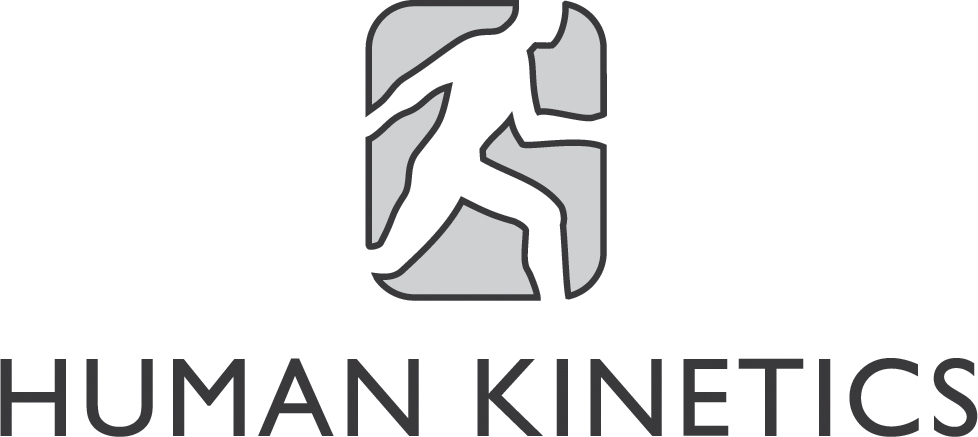Contents
Guide
Pagebreaks of the print version
Secrets of Successful Program Design
A How-To Guide for Busy Fitness Professionals
Alwyn Cosgrove, CSCS
Craig Rasmussen, CSCS

Library of Congress Cataloging-in-Publication Data
Names: Cosgrove, Alwyn, author. | Rasmussen, Craig, author.
Title: Secrets of successful program design : a how-to guide for busy fitness professionals / Alwyn Cosgrove, Craig Rasmussen.
Description: Champaign, IL : Human Kinetics, 2021.
Identifiers: LCCN 2020007650 (print) | LCCN 2020007651 (ebook) | ISBN 9781492593225 (paperback) | ISBN 9781492593232 (epub) | ISBN 9781492593249 (pdf)
Subjects: LCSH: Physical education and training. | Exercise.
Classification: LCC GV711.5 .C67 2021 (print) | LCC GV711.5 (ebook) | DDC 613.7/1--dc23
LC record available at https://lccn.loc.gov/2020007650
LC ebook record available at https://lccn.loc.gov/2020007651
ISBN: 978-1-4925-9322-5 (print)
Copyright 2021 by Results Fitness Inc.
Human Kinetics supports copyright. Copyright fuels scientific and artistic endeavor, encourages authors to create new works, and promotes free speech. Thank you for buying an authorized edition of this work and for complying with copyright laws by not reproducing, scanning, or distributing any part of it in any form without written permission from the publisher. You are supporting authors and allowing Human Kinetics to continue to publish works that increase the knowledge, enhance the performance, and improve the lives of people all over the world.
This publication is written and published to provide accurate and authoritative information relevant to the subject matter presented. It is published and sold with the understanding that the author and publisher are not engaged in rendering legal, medical, or other professional services by reason of their authorship or publication of this work. If medical or other expert assistance is required, the services of a competent professional person should be sought.
The web addresses cited in this text were current as of March 2020, unless otherwise noted.
Acquisitions Editor: Michael Mejia; Developmental Editor: Laura Pulliam; Managing Editor: Miranda K. Baur; Copyeditor: Lisa Himes; Permissions Manager: Martha Gullo; Graphic Designers: Whitney Milburn and Dawn Sills; Cover Designer: Keri Evans; Cover Design Specialist: Susan Rothermel Allen; Photograph (cover): jacoblund/iStock/Getty Images; Photographs (interior): Human Kinetics, unless otherwise noted; Photo Production Specialist: Amy Rose; Photo Production Manager: Jason Allen; Senior Art Manager: Kelly Hendren; Illustrations: Human Kinetics; Printer: Sheridan Books
We thank Results Fitness in Santa Clarita, CA, for assistance in providing the location for the photo shoot for this book.
Human Kinetics books are available at special discounts for bulk purchase. Special editions or book excerpts can also be created to specification. For details, contact the Special Sales Manager at Human Kinetics.
Printed in the United States of America 10 9 8 7 6 5 4 3 2 1
The paper in this book is certified under a sustainable forestry program.
Human Kinetics
1607 N. Market Street
Champaign, IL 61820
USA
United States and International
Website: US.HumanKinetics.com
Email: info@hkusa.com
Phone: 1-800-747-4457
Canada
Website: Canada.HumanKinetics.com
Email: info@hkcanada.com
E7916

This is for all of our colleagues and mentors
who have educated us over so many years.
Thank you for all that you have taught us.
Contents
Preface
At our gym, Results Fitness, we are known for writing programs, not just workouts. But what do we mean by this? What is the difference between a program and a workout?
A program is an overall training plan that is written based on a particular goalplan and goal being the operative words. A single workout (or training session) is a part of this plan, and the structured sequencing of multiple workouts, or daily training sessions is a portion of programming. A workout is simply what you do on any given training day. Looked at by itself, without respect to the rest of the overall plan, the individual workout doesnt amount to much.
Periodization is a term that has varying definitions, but most would agree that it means using structured planning and manipulation of training variables to achieve a desired training response over a certain time period.
When creating a program, we always look at the big picture first, figuring out the clients goals, and then estimating how long it will take to reach them. From there, we create an overall long-term periodization plan, or macrocycle. This plan can cover a minimum of 8 to 12 weeks for specific short-term goals, but it can also encompass 16 weeks up to a year. Once we have determined the time frame, we can get more specific and divide the schedule into mesocycles, which are typically 4- to 6-week blocks of time. From there, we add increasingly detailed plans for specific training weeks, or microcycles. Finally, we divide it even further and design each individual training day (or workout), for which we choose exercises, tempos, and rest periods.
We begin with the big picture in mind, then break things down to the individual workout level. Novice coaches and trainers will typically start in the opposite manner, with a mentality of What exercise am I going to do today? They will then design a random workout for a particular day using their favorite exercise without regard for the long-term plan. This is an ineffective approach; we want to attain the desired results by executing a properly considered plan and not achieve these results as a possible side effect from a string of random workouts.
As a busy fitness professional, you will soon realize that programming for clients will take up a large portion of your time and energyespecially if you are trying to cook from scratch each time you create a training program. You will quickly learn that the lack of a programming system will cause you to repeat mistakes. Hint: You need a recipe. So, the big question is How do you create a sound programming system? Rest assured, you are in the correct place.
SYSTEM is an acronym that we talk about at our gym, Results Fitness. What does it stand for? There are several versions, but the one we like best is this: Save Yourself Substantial Time, Energy, and Money. Mark Verstegen, founder of EXOS (a health and human performance company widely renowned for their systems-based approach), has also stated that one of the most important aspects of using systems is to help us avoid making repeated mistakes. Mistakes are always going to happen. They are a big part of how we learn, but we want to avoid continually repeating the same mistakes, because they will become massive problems for us moving forward.
Successful businesses rely upon the ability to implement and execute systems. In some of his lectures about systems, Alwyn has mentioned how a McDonalds Big Mac is the same in Los Angeles as it is in China. You can trust that a Big Mac will be the same wherever you are because they make it the same way. Im sure that youre thinking that you can get a better hamburger somewhere else, but the point isnt about the quality of the hamburgerit is the fact that McDonalds can faithfully reproduce a desired result because they use a system; they dont try to reinvent the Big Mac with each and every one they make. Winging it is a recipe for disaster; following a system is a recipe for success. For this reason, fitness programming must also be system based.







